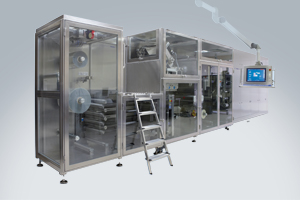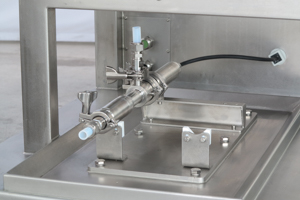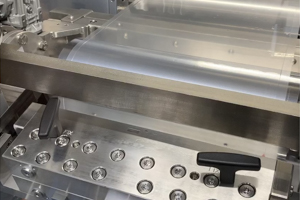How the dosing system influences quality
The world’s population is growing, and with it the demand for mobility solutions and state-of-the-art medicine, to name just two of many areas. Statistics[1] show that demand for electricity storage systems and batteries will rise as a result by 2030. The numbers of personalized drugs for the ageing population will also increase, accompanied by the opportunity to treat neurological diseases such as Alzheimer’s with easy-to-use transdermal patches.
Both trend areas – in mobility and medicine – are closely linked to technological advances in engineering: A key process step in battery production and the manufacture of membrane or matrix patches is continuous foil coating. The Swiss corporation Mathis AG develops and builds a variety of coating systems. It uses almost the full range of highly advanced dosing solutions from ViscoTec to ensure precise and reliable dosing of a wide variety of materials in its coating systems for general industry, battery production, the pharmaceutical industry, and medical technology. Recently, the engineers integrated a ViscoTec dosing system into a coating plant for the production of transdermal patches, which are used in the treatment of Alzheimer’s disease. Transdermal patches introduce one or more active agents directly into the body via the skin in order to spread their effect throughout the entire organism.
A challenging task: coating and foil
Mathis AG was looking primarily for a dosing solution that could handle chemically aggressive media such as acetone or ethanol with ease. ViscoTec ensures that by using materials designed precisely for Mathis AG’s materials and processes. The Swiss manufacturer’s machines (Fig. 1) implement one of the most important processes in the production of transdermal patches: the application of a coating material to a very thin foil (substrate). The type of coating material and substrate are closely correlated with the specific requirements of pharmaceutical companies. Foils such as PP, PET, PETC or PETB can be processed, at 4 micrometers and less. Downstream of the foil feed, the material to be applied to the foil is drawn from the machine-integrated tank by the ViscoTec dosing pump and pumped to the slit nozzle (Fig. 2). Complete emptying on the suction side is achieved by the self-priming progressive cavity pump. This eliminates the need for a pressure tank to supply the pump.
On the pressure side, the progressive cavity pump ensures a very low-pulsation dosing flow. The slit nozzle integrated into this custom coating plant is a specially made product based on technical parameters specific to the transdermal patch foil used in the treatment of Alzheimer’s disease. The slit nozzle and the very low-pulsation dosing flow ensure that the material is applied evenly to the foil. So the slit nozzle is the key quality-determining component in the coating process. Alternatively, spreading blades can also be used for coating with high-viscosity materials.
Viscosity and high pressures: Mathis AG trusts the ViscoTec dosing system
The slit nozzle is designed for very fine dosing flows and so, depending on the viscosity of the material, can be subject to high pressures. ViscoTec guarantees consistently identical process quality even with such production parameters, because the dosing system tolerates back-pressures of up to 24 bar.
Once the foil has been coated, quality control is effected by weighing (in a closed-loop system). If it is necessary to adapt parameters, such as the pump speed, this can be done inline by adjusting the speed of the servomotor. Coating is followed by the drying process, in separate modules. Temperatures are between 40°C and 80°C, depending on the type of foil and coating material, so as not to damage the active agent.
The final step is laminating and winding. The finished roll material is the starting product for further manufacturing processes such as punching and separating, and so for the production of transdermal patches as are used in the personalized treatment of neurological diseases, as well as in pain therapy and hormone replacement therapy. The facility to dismantle components from the plant without using tools is also highly relevant in the production of foil for transdermal patches: Parts coming into contact with the material, such as the feed tank, pump and slit nozzle, must be cleaned after each batch. Intuitive operation of the catches and locks allows quicker disassembly and cleaning. That is also beneficial in terms of manufacturers’ total cost of ownership over the long term.
[1]https://de.statista.com/statistik/daten/studie/1033810/umfrage/prognostizierter-jaehrlicher-leistungsbedarf-der-batterien-fuer-elektroautos/



